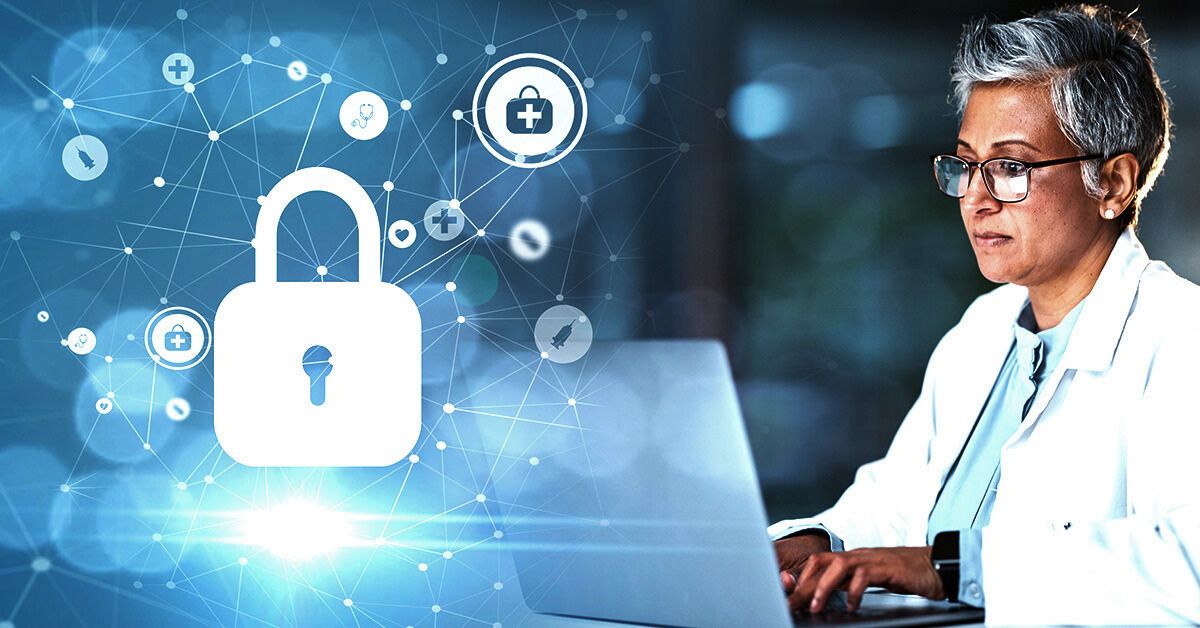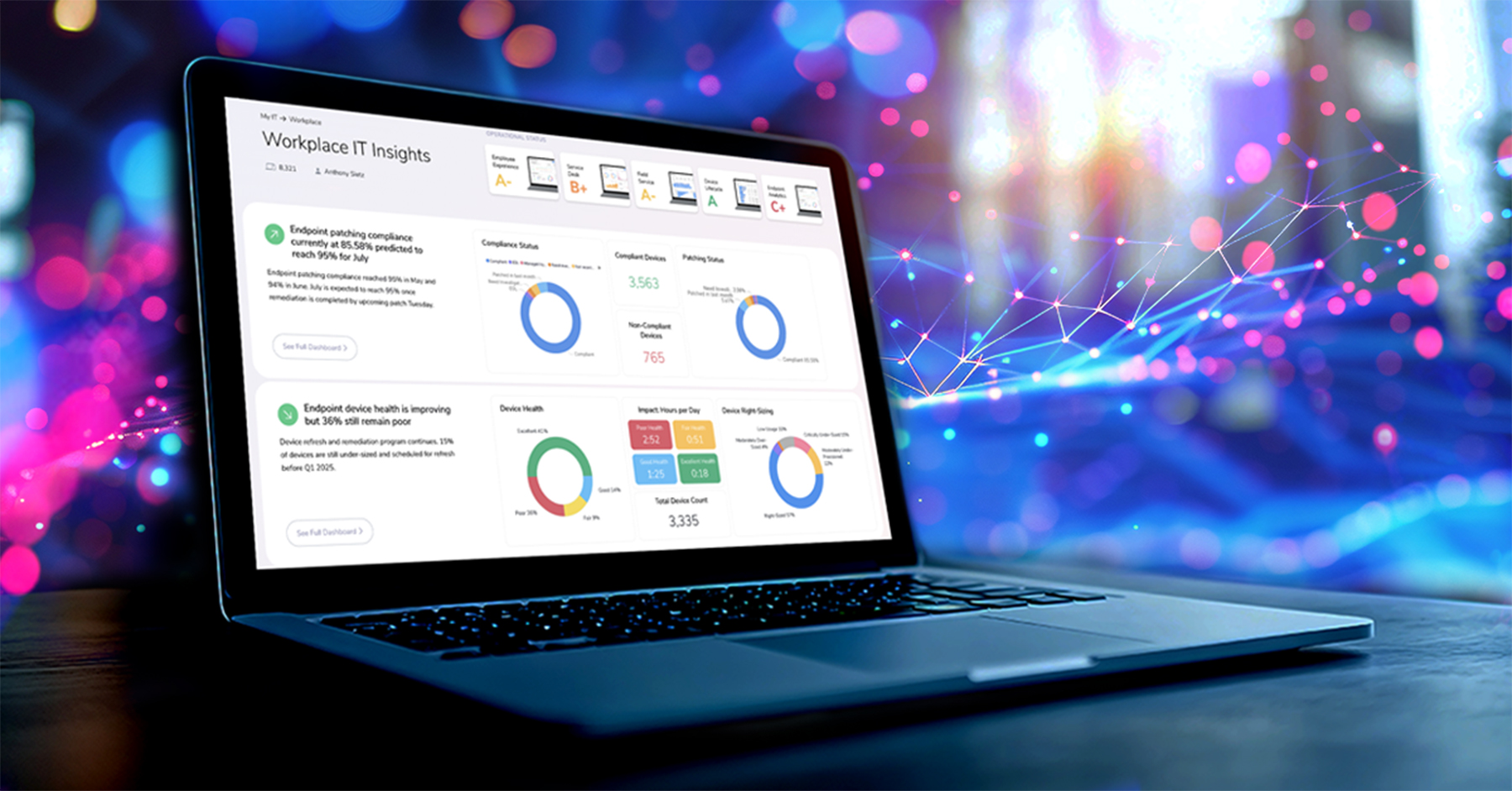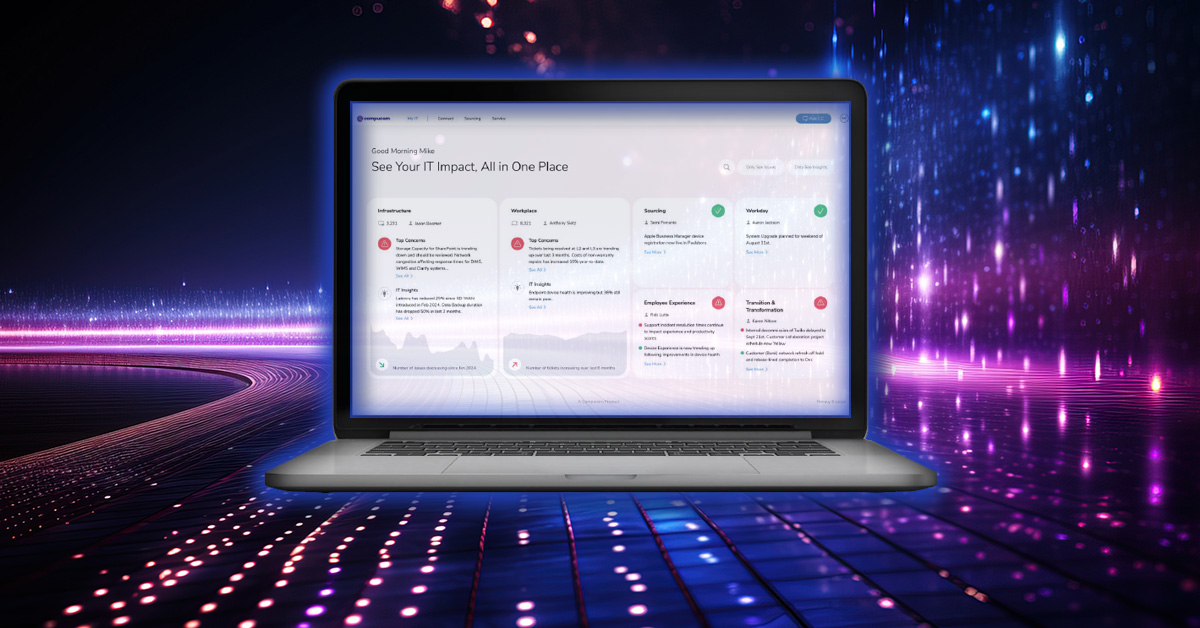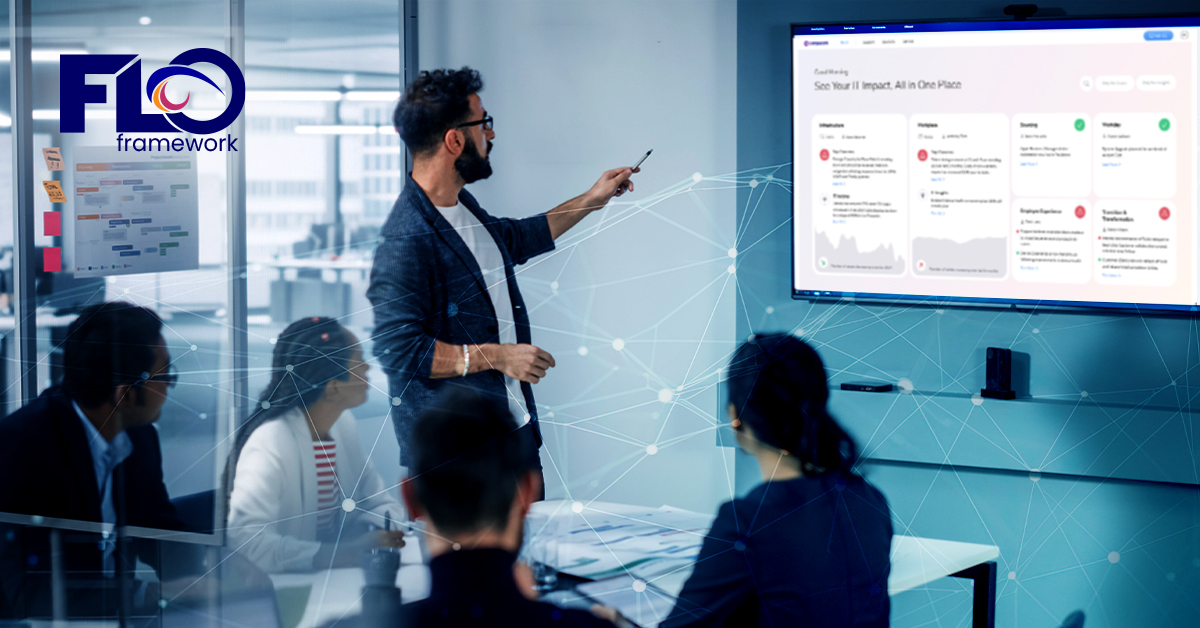- Device Lifecycle Services
- Cybersecurity


Fred Ibrahimsha • Cybersecurity Solutions Practice Lead
The increased pace of digital transformation in healthcare over the past few years, with improvements such as patient record access from mobile devices, has improved patient care and streamlined workflows. However, it has also introduced new data security and privacy risks for electronic health records (EHR). This is especially alarming with the current rate and sophistication of cyberattacks.
While steps must be taken to protect patients and ensure HIPAA (Health Insurance Portability and Accountability Act of 1996) compliance, it’s vitally important that security measures don’t burden healthcare staff or delay patient care by reducing the usability of their devices.
Don’t Mess with HIPAA
HIPAA compliance is not only a legal obligation under federal law but also a business imperative. Failing to comply can result in civil and criminal penalties of over a million dollars per year for each identical violation. Even greater costs can come for healthcare organizations from the resulting reputational damage and loss of business, not to mention harm to the affected individuals whose electronic protected health information (ePHI) may be exposed, stolen, or misused.
Best Practices to Help Meet HIPAA’s Stringent Requirements
Users and devices are often the weakest link in the security chain and the most common target of attacks in an industry that is a favorite target for criminals. In 2023, there were 809 incidents involving data compromise in the US healthcare sector — an all-time high.
Device security is a critical component of HIPAA compliance. With your hardworking healthcare staff already under pressure, it’s unwise to force them to choose between compliance or providing timely patient care, which can happen when staff must jump through hoops for security on their devices.
There are several ways managed services providers (MSP) can help you meet HIPAA’s regulations while ensuring technology is usable and efficient for healthcare staff.
Modern Device Management
With Modern Device Management (MDM), a healthcare organization can oversee and control all devices within their network so they can ensure the devices are secure, compliant, and optimized. Key aspects of MDM include:
- Configuration management
- Patch management
- Device inventory management
- Remote monitoring and troubleshooting
Effective device management improves security by preventing unauthorized access, enforcing security policies, and minimizing risks. Ensuring devices are well maintained also helps healthcare staff remain productive.
Device Lifecycle Services
While it’s convenient for clinicians and hospital staff to use smartphones and tablets, loss, misplacement, or theft becomes more common with mobile devices. To protect sensitive data, there must be accountability for these devices throughout their lifecycle.
Device Lifecycle services cover the entire lifespan of a device, from acquisition to disposal. Key stages include:
- Procurement: Selecting devices with security considerations in mind.
- Provisioning: Setting up essential security settings and installing necessary software.
- Maintenance: Regularly updating, patching, and monitoring devices.
- Disposition: Ensuring a secure retirement process, including wiping sensitive data and proper disposal of devices.
Compucom can provide a single chain of custody for your assets with services performed in-house at our secure Advanced Configuration Centers, giving you the accountability and peace of mind you need for compliance with requirements like HIPAA.
Zero Trust
Zero Trust is a security framework that assumes no implicit trust for any user or device, even from within the network. Unlike perimeter-based security, it operates under the assumption that breaches will happen and takes a more cautious approach. Some main principles of Zero Trust include:
- Least privilege access: Providing users and devices with only essential access rights.
- Micro-segmentation: Isolating network segments to limit lateral movement and minimize the damage of any potential breach.
- Continuous authentication and authorization: Verifying user and device identity for every interaction.
Multi-Factor Authentication (MFA) fits into the Zero Trust model. It requires users to provide multiple authentication factors, such as a password, a one-time PIN, or biometrics, to access resources. By combining something the user knows (a password) with something they have (a smartphone), MFA enhances security.
Modern Device Management
In our five-part AIOps series, we’ve explained what it is, how it works (part 1 and part 2), and offered advice on how to go beyond the hype to get its full advantages (hint: it’s all about the proper integration of toolsets with your IT systems). Finally, we’ve concluded with some real-world examples of its benefits.
To optimize IT operations, your IT team needs to understand the big picture by correlating metrics, events, and logs and then connecting the dots to figure out solutions. AIOps gives them automation and advanced tools to help them achieve that.
Partner with a provider with real-world experience, like Compucom, and go beyond the buzzword to truly effective AIOps.
Compucom Helps Customers with Compliance and Usability
We’re focused on our healthcare customers meeting their business goals. This usually means helping them meet strict compliance requirements while simultaneously ensuring their staff have a digital experience that will keep them productive.
For example, we often recommend and help customers implement Cisco Duo to enhance the usability of Multi-Factor Authentication while maintaining robust security and compliance with HIPAA and EPCS (Electronic Prescription of Controlled Substances). Cisco Duo can help achieve this balance through:
- Non-disruptive and risk-based authentication: A fast and seamless login experience, with increased security for more risky login attempts.
- Quick integration: Easily added to any application on any device from anywhere. This ensures users frictionless access to resources such as Epic.
- Flexibility: Authentication can happen through several methods, such as the Duo Push mobile app, biometrics, or tokens.
- Prescriptions from anywhere: Duo’s MFA allows user to self-enroll and approve e-prescriptions from their smartphones.
Staying on top of constant threats can be a lot for a healthcare provider’s internal team. Through our partnerships with industry leaders such as Cisco, we can help you stay ahead of the threats.
A Trusted Partner for Healthcare
We’ve designed our comprehensive portfolio of IT services to provide the sourcing, integration, and support you need for your technology. Let us be your one-stop shop for all things IT, freeing up time for your internal teams to focus on other critical initiatives that can further improve patient care.
RecenT

9 Ways Strategic IT Staffing Empowers Organizations

Case Studies: Asset Intelligence and Endpoint Compliance Made Easy

AI and the Enterprise: The Future of IT Management

Exploring the Opportunities and Obstacles of AI in the Enterprise

One Dashboard to Rule Them All: Strategic IT Excellence with Full Lifecycle Observability

Transforming IT Operations with Full Lifecycle Observability: How Compucom’s FLO Framework Redefines Data-Driven Efficiency
TOPICS
Protect Healthcare Data Without Sacrificing Device Usability
- Device Lifecycle Services
- Cybersecurity

Fred Ibrahimsha • Cybersecurity Solutions Practice Lead
The increased pace of digital transformation in healthcare over the past few years, with improvements such as patient record access from mobile devices, has improved patient care and streamlined workflows. However, it has also introduced new data security and privacy risks for electronic health records (EHR). This is especially alarming with the current rate and sophistication of cyberattacks.
While steps must be taken to protect patients and ensure HIPAA (Health Insurance Portability and Accountability Act of 1996) compliance, it’s vitally important that security measures don’t burden healthcare staff or delay patient care by reducing the usability of their devices.
Don’t Mess with HIPAA
HIPAA compliance is not only a legal obligation under federal law but also a business imperative. Failing to comply can result in civil and criminal penalties of over a million dollars per year for each identical violation. Even greater costs can come for healthcare organizations from the resulting reputational damage and loss of business, not to mention harm to the affected individuals whose electronic protected health information (ePHI) may be exposed, stolen, or misused.
Best Practices to Help Meet HIPAA’s Stringent Requirements
Users and devices are often the weakest link in the security chain and the most common target of attacks in an industry that is a favorite target for criminals. In 2023, there were 809 incidents involving data compromise in the US healthcare sector — an all-time high.
Device security is a critical component of HIPAA compliance. With your hardworking healthcare staff already under pressure, it’s unwise to force them to choose between compliance or providing timely patient care, which can happen when staff must jump through hoops for security on their devices.
There are several ways managed services providers (MSP) can help you meet HIPAA’s regulations while ensuring technology is usable and efficient for healthcare staff.
Modern Device Management
With Modern Device Management (MDM), a healthcare organization can oversee and control all devices within their network so they can ensure the devices are secure, compliant, and optimized. Key aspects of MDM include:
- Configuration management
- Patch management
- Device inventory management
- Remote monitoring and troubleshooting
Effective device management improves security by preventing unauthorized access, enforcing security policies, and minimizing risks. Ensuring devices are well maintained also helps healthcare staff remain productive.
Device Lifecycle Services
While it’s convenient for clinicians and hospital staff to use smartphones and tablets, loss, misplacement, or theft becomes more common with mobile devices. To protect sensitive data, there must be accountability for these devices throughout their lifecycle.
Device Lifecycle services cover the entire lifespan of a device, from acquisition to disposal. Key stages include:
- Procurement: Selecting devices with security considerations in mind.
- Provisioning: Setting up essential security settings and installing necessary software.
- Maintenance: Regularly updating, patching, and monitoring devices.
- Disposition: Ensuring a secure retirement process, including wiping sensitive data and proper disposal of devices.
Compucom can provide a single chain of custody for your assets with services performed in-house at our secure Advanced Configuration Centers, giving you the accountability and peace of mind you need for compliance with requirements like HIPAA.
Zero Trust
Zero Trust is a security framework that assumes no implicit trust for any user or device, even from within the network. Unlike perimeter-based security, it operates under the assumption that breaches will happen and takes a more cautious approach. Some main principles of Zero Trust include:
- Least privilege access: Providing users and devices with only essential access rights.
- Micro-segmentation: Isolating network segments to limit lateral movement and minimize the damage of any potential breach.
- Continuous authentication and authorization: Verifying user and device identity for every interaction.
Multi-Factor Authentication (MFA) fits into the Zero Trust model. It requires users to provide multiple authentication factors, such as a password, a one-time PIN, or biometrics, to access resources. By combining something the user knows (a password) with something they have (a smartphone), MFA enhances security.
Modern Device Management
In our five-part AIOps series, we’ve explained what it is, how it works (part 1 and part 2), and offered advice on how to go beyond the hype to get its full advantages (hint: it’s all about the proper integration of toolsets with your IT systems). Finally, we’ve concluded with some real-world examples of its benefits.
To optimize IT operations, your IT team needs to understand the big picture by correlating metrics, events, and logs and then connecting the dots to figure out solutions. AIOps gives them automation and advanced tools to help them achieve that.
Partner with a provider with real-world experience, like Compucom, and go beyond the buzzword to truly effective AIOps.
Compucom Helps Customers with Compliance and Usability
We’re focused on our healthcare customers meeting their business goals. This usually means helping them meet strict compliance requirements while simultaneously ensuring their staff have a digital experience that will keep them productive.
For example, we often recommend and help customers implement Cisco Duo to enhance the usability of Multi-Factor Authentication while maintaining robust security and compliance with HIPAA and EPCS (Electronic Prescription of Controlled Substances). Cisco Duo can help achieve this balance through:
- Non-disruptive and risk-based authentication: A fast and seamless login experience, with increased security for more risky login attempts.
- Quick integration: Easily added to any application on any device from anywhere. This ensures users frictionless access to resources such as Epic.
- Flexibility: Authentication can happen through several methods, such as the Duo Push mobile app, biometrics, or tokens.
- Prescriptions from anywhere: Duo’s MFA allows user to self-enroll and approve e-prescriptions from their smartphones.
Staying on top of constant threats can be a lot for a healthcare provider’s internal team. Through our partnerships with industry leaders such as Cisco, we can help you stay ahead of the threats.
A Trusted Partner for Healthcare
We’ve designed our comprehensive portfolio of IT services to provide the sourcing, integration, and support you need for your technology. Let us be your one-stop shop for all things IT, freeing up time for your internal teams to focus on other critical initiatives that can further improve patient care.
Recent Blogs

9 Ways Strategic IT Staffing Empowers Organizations

Case Studies: Asset Intelligence and Endpoint Compliance Made Easy

AI and the Enterprise: The Future of IT Management

Exploring the Opportunities and Obstacles of AI in the Enterprise

One Dashboard to Rule Them All: Strategic IT Excellence with Full Lifecycle Observability




